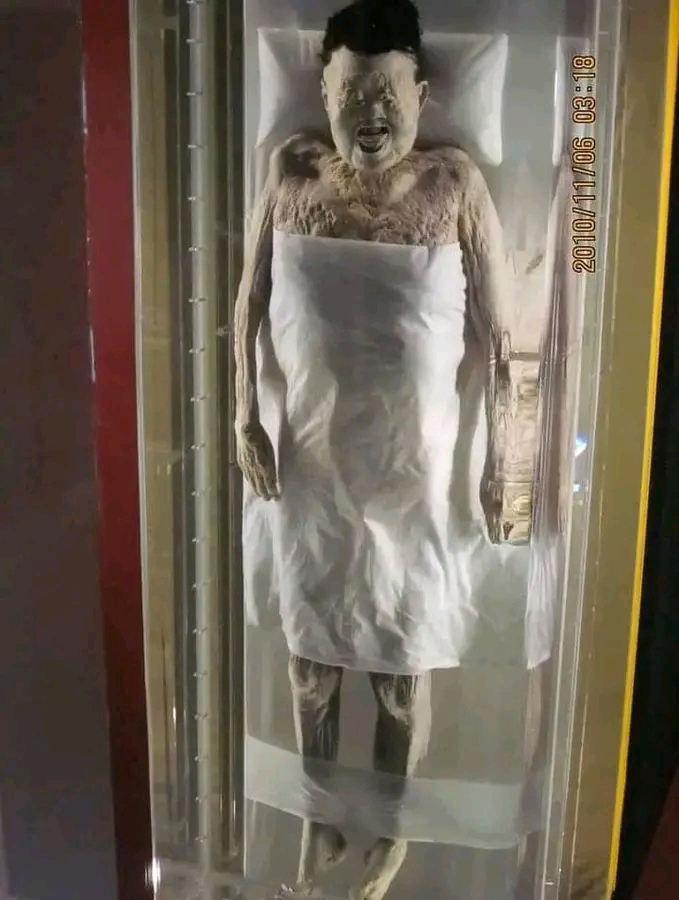This is the preserved body of Xin Zhui, a Chinese noblewoman of the Han Dynasty who lived c. 217 – c. 168 BC. At almost 2,200 years old, her body is one of the best preserved ancient mummies ever found.
Xin Zhui was a wealthy noblewoman who lived a lavish lifestyle, which included plenty of food and drink. Her health suffered, and at the age of about 50 she died of a heart attack. After her death, she was buried in four sealed coffins buried beneath charcoal and white clay. Xin Zhui's body was found in the fourth innermost coffin. It was wrapped in 20 layers of silk and lay in an acidic fluid that had preserved her corpse.
The first of her four coffins was painted black, the colour of death and the underworld; the second coffin was painted with clouds, animals and deities on a black background; the third coffin was painted red with depictions of devine animals; the final innermost coffin had a silk banner placed on top of it depicting heaven, Earth and the netherworld.
Workers discovered the tomb when they were digging an air raid shelter for a hospital in
Changsha, Hunan Province, in 1968. By 1972 the tomb had been excavated and an autopsy was performed by doctors at Hunan Provincial Medical Institute. The body was so well preserved that the limbs could flex at the joints and Type A blood was found in her veins.
1,400 artefacts were discovered in the tomb, including food, plates, makeup, toiletries, wooden figurines representing servants, and a wardrobe containing silk garments. These were for her use in the afterlife.
. . .
This is the preserved body of Xin Zhui, a Chinese noblewoman of the Han Dynasty who lived c. 217 – c. 168 BC. At almost 2,200 years old, her body is one of the best preserved ancient mummies ever found.
Xin Zhui was a wealthy noblewoman who lived a lavish lifestyle, which included plenty of food and drink. Her health suffered, and at the age of about 50 she died of a heart attack. After her death, she was buried in four sealed coffins buried beneath charcoal and white clay. Xin Zhui's body was found in the fourth innermost coffin. It was wrapped in 20 layers of silk and lay in an acidic fluid that had preserved her corpse.
The first of her four coffins was painted black, the colour of death and the underworld; the second coffin was painted with clouds, animals and deities on a black background; the third coffin was painted red with depictions of devine animals; the final innermost coffin had a silk banner placed on top of it depicting heaven, Earth and the netherworld.
Workers discovered the tomb when they were digging an air raid shelter for a hospital in
Changsha, Hunan Province, in 1968. By 1972 the tomb had been excavated and an autopsy was performed by doctors at Hunan Provincial Medical Institute. The body was so well preserved that the limbs could flex at the joints and Type A blood was found in her veins.
1,400 artefacts were discovered in the tomb, including food, plates, makeup, toiletries, wooden figurines representing servants, and a wardrobe containing silk garments. These were for her use in the afterlife.
. . .







